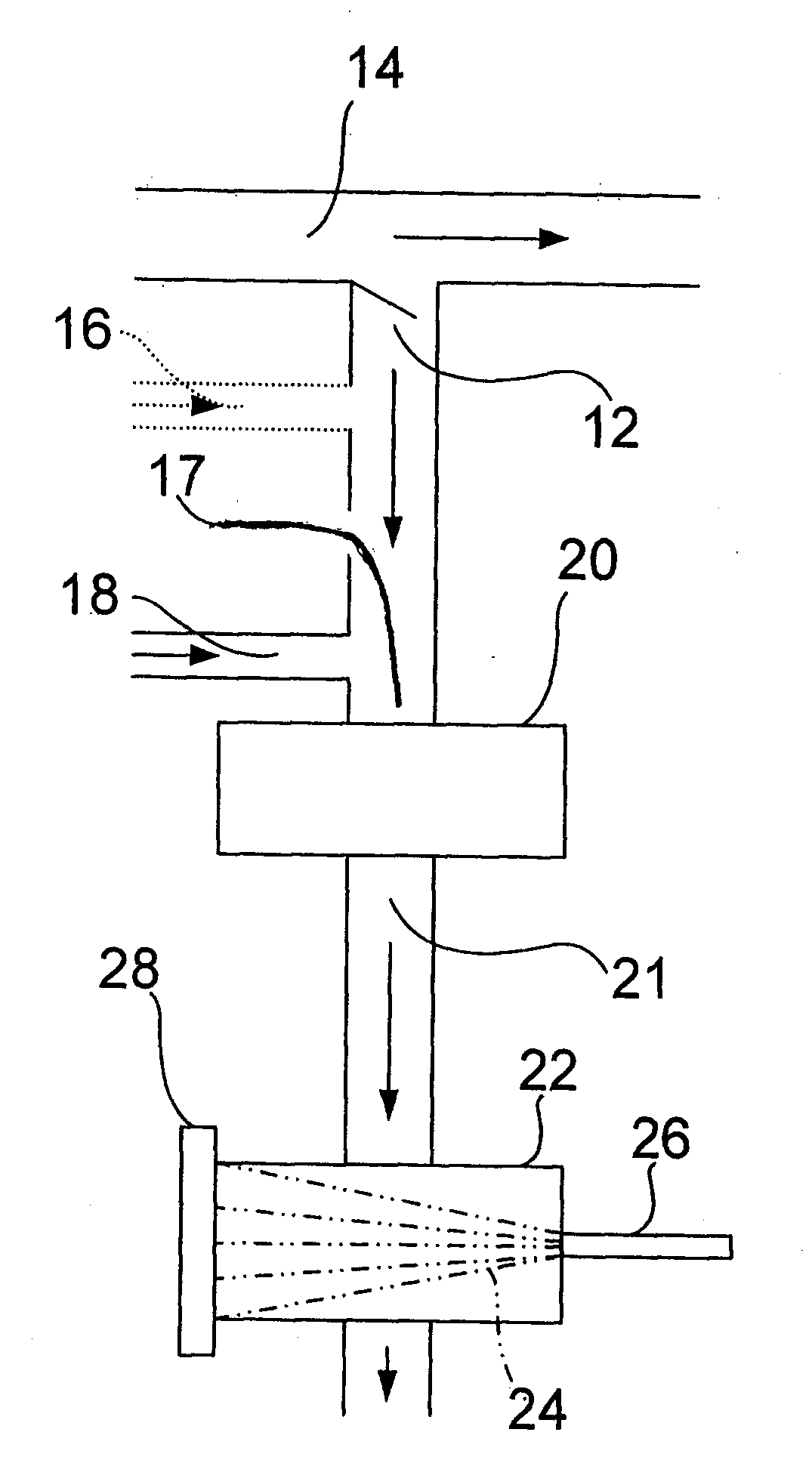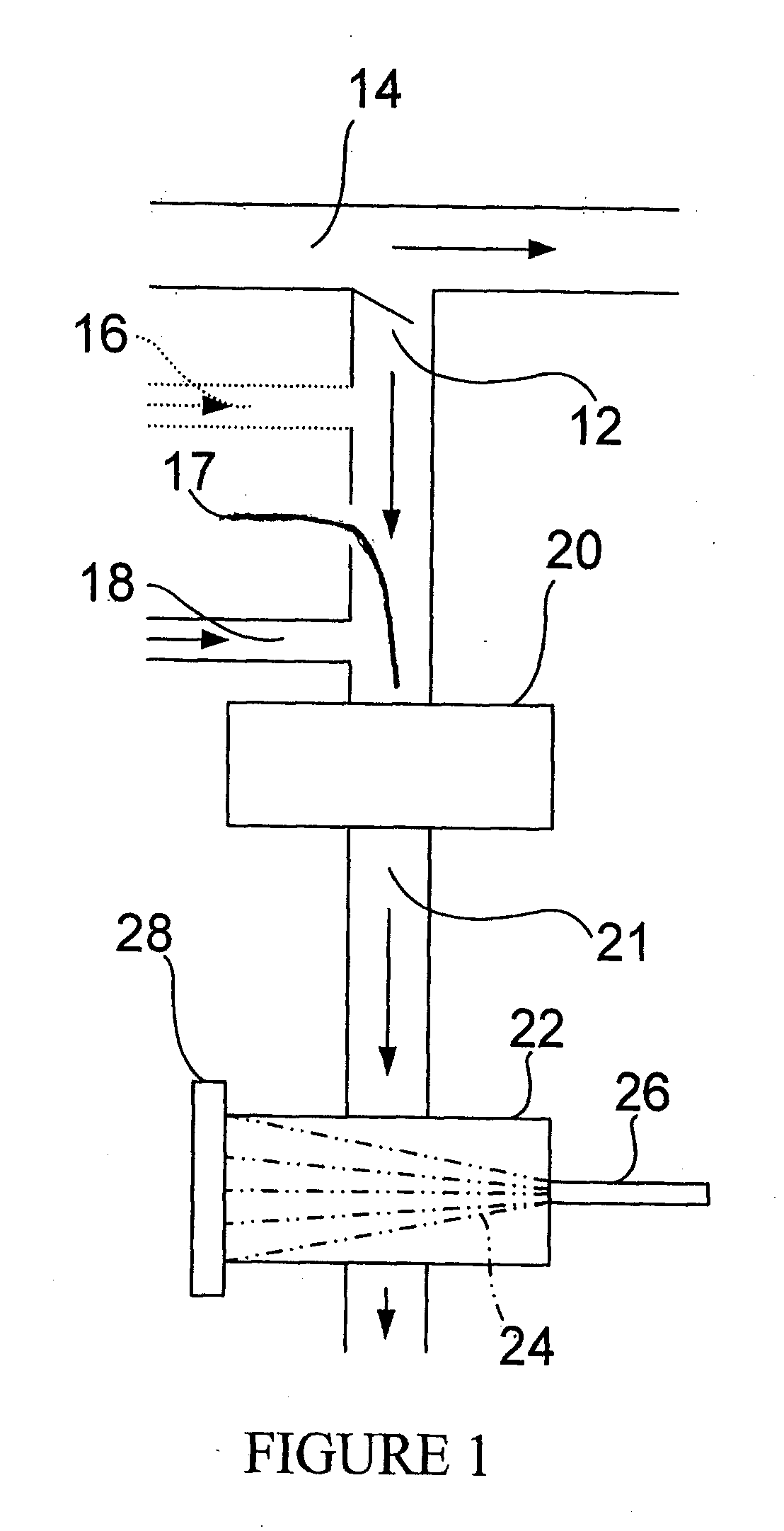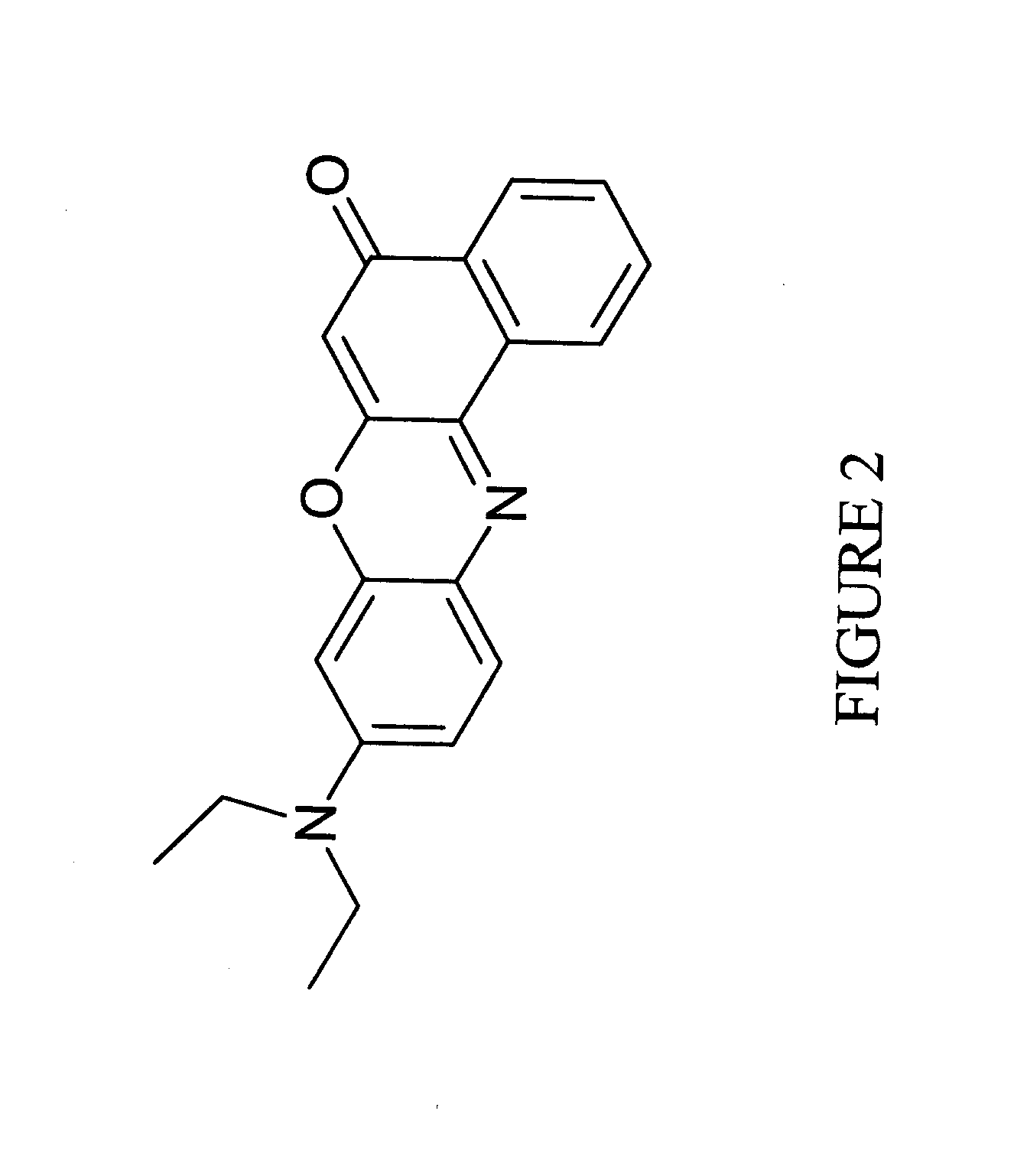Method for Measuring Hydrophobic Contaminants in Paper Pulp
a hydrophobic and paper pulp technology, applied in the field of paper pulp suspension monitoring methods, can solve the problems of preventing the application of large industrial scale to large scale, limiting the use of methods to laboratory levels, and preventing the control and removal of contaminants, etc., and achieves the effect of high fluorescent intensities
- Summary
- Abstract
- Description
- Claims
- Application Information
AI Technical Summary
Benefits of technology
Problems solved by technology
Method used
Image
Examples
examples
[0052]Referring to FIG. 7, it will be seen an experimental set-up for measuring the contaminants in a paper pulp sample. Fluorescence measurements were obtained using a double monochromator Fluorolog 2 instrument. The excitation wavelength, provided by a 250 W tungsten lamp, was fixed at 550 nm and the emission wavelength was fixed at 650 nm. The excitation and emission slits were opened at 2 and 3 mm, respectively. The fluorescence was recorded at 90° of the excitation beam from a flow cell. The flow cell was a simple 8 cm long glass tube with an inside diameter of 6 mm. A flow of 6 L / min was obtained for a pulp consistency of 0.13% (w / w) using a centrifugal pump. Except if mentioned otherwise, these parameters were kept constant for all the measurements and the measurements were recorded at 200 Hz.
[0053]Contaminants measurements obtained by fluorescence were compared to the results obtained with the conventional laboratory method for stickies measurement (using a Pulmac for screen...
PUM
| Property | Measurement | Unit |
|---|---|---|
| Flow rate | aaaaa | aaaaa |
| Concentration | aaaaa | aaaaa |
| Density | aaaaa | aaaaa |
Abstract
Description
Claims
Application Information
 Login to View More
Login to View More - R&D
- Intellectual Property
- Life Sciences
- Materials
- Tech Scout
- Unparalleled Data Quality
- Higher Quality Content
- 60% Fewer Hallucinations
Browse by: Latest US Patents, China's latest patents, Technical Efficacy Thesaurus, Application Domain, Technology Topic, Popular Technical Reports.
© 2025 PatSnap. All rights reserved.Legal|Privacy policy|Modern Slavery Act Transparency Statement|Sitemap|About US| Contact US: help@patsnap.com



